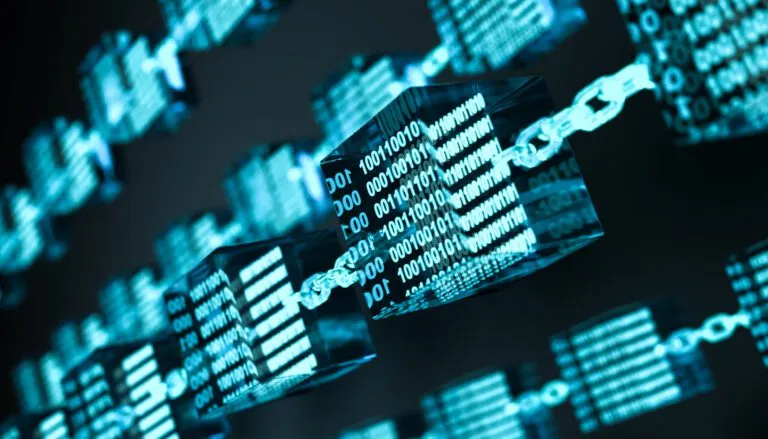Introduction
Blockchain’s decentralized nature makes it a powerful tool for trustless transactions. However, it has an inherent limitation: isolation from external data sources. This isolation restricts the range of applications blockchain can support, especially in data-intensive fields. Blockchain oracles address this limitation by serving as a conduit for external data to enter the blockchain ecosystem. In this article, we’ll explore how oracles operate, the risks and challenges associated with them, and their transformative role in decentralized applications (dApps), particularly in sectors like decentralized finance (DeFi) and supply chain management.
1. What Are Blockchain Oracles?
Blockchain oracles are tools that connect blockchains with off-chain data sources, enabling smart contracts to interact with real-world data. They form a bridge, allowing data to flow into and out of the blockchain in a verifiable, trustworthy manner. Without oracles, smart contracts are limited to data existing only on the blockchain. By providing accurate, real-time data, oracles expand the capabilities of blockchain applications, enabling the automation of complex processes, such as insurance contracts that rely on weather data or financial protocols that need real-time price feeds.
Oracles are essential for creating hybrid smart contracts—those that can utilize off-chain data to carry out on-chain functions. As blockchain technology advances, the role of oracles continues to grow, supporting the secure execution of real-world applications.
2. How Blockchain Oracles Work
The operation of an oracle begins with a smart contract request. When a smart contract requires data from an external source (for example, a cryptocurrency price), it sends a request to an oracle service. The oracle then fetches data from various sources, verifies it for accuracy, and delivers it back to the blockchain. This process, while seemingly straightforward, involves sophisticated protocols to ensure data integrity, security, and reliability.
Example: Consider a DeFi protocol that requires real-time asset prices to calculate lending rates. Here’s how an oracle would facilitate this:
- The smart contract initiates a request for current asset prices.
- The oracle collects data from multiple exchanges or financial platforms.
- Using consensus mechanisms or other verification methods, the oracle confirms the accuracy of the data.
- The verified price is transmitted back to the blockchain, where the smart contract can then use it to execute a lending rate calculation.
This operational framework allows blockchains to interact with various data types, from IoT device data to web-based APIs, making oracles an integral part of the decentralized landscape.
3. Types of Blockchain Oracles
There are several types of blockchain oracles, each designed to meet different use cases and requirements:
- Software Oracles: These oracles retrieve data from online sources like APIs, databases, and web servers. They are commonly used to provide data such as financial market prices, weather forecasts, and sports scores.
- Hardware Oracles: Hardware oracles collect data from physical sources, like IoT devices or RFID scanners. This type is particularly valuable for supply chain applications where physical tracking is necessary, for example, verifying the location of goods or monitoring environmental conditions during transport.
- Inbound vs. Outbound Oracles: Inbound oracles retrieve data and bring it onto the blockchain (e.g., retrieving a flight’s status to trigger an insurance payout), while outbound oracles take data from the blockchain to influence external systems, such as an automatic bank payment.
- Consensus-Based Oracles: Some blockchain systems use consensus oracles to enhance data integrity by aggregating and cross-verifying data from multiple sources before delivering it to the blockchain. This setup minimizes the risk of tampered or inaccurate data affecting smart contract execution.
Each oracle type is uniquely suited to specific needs and use cases. For instance, DeFi protocols frequently rely on software oracles for real-time market data, whereas supply chains might prioritize hardware oracles for tracking physical assets.
4. Oracle Use Cases in Decentralized Applications
Oracles play a pivotal role in expanding the functionality of decentralized applications by providing access to real-world data. Here are a few notable use cases across industries:
- DeFi (Decentralized Finance): Oracles provide asset prices, liquidity data, and other financial information essential for DeFi protocols. Platforms like Aave and Uniswap depend on accurate price feeds to calculate interest rates and execute trades.
- Insurance: Oracles enable automated insurance contracts by verifying external conditions that affect payouts. For example, a crop insurance policy can use an oracle to pull weather data, allowing automated payouts if temperatures drop below a specified threshold.
- Supply Chain Management: Oracles facilitate transparency in supply chains by recording data from IoT devices and physical sensors. They enable real-time tracking of goods, verifying conditions such as temperature and location during transit to ensure product quality.
- NFTs and Gaming: In the gaming world, oracles retrieve in-game data and assets, while in NFT platforms, oracles are used to connect real-world events or metrics with digital assets, creating NFTs that respond to real-world triggers.
By connecting blockchains to a broader data ecosystem, oracles make it possible for these industries to automate processes securely and transparently.
5. Security Challenges and Risks Associated with Oracles
Despite their usefulness, oracles present certain security risks and challenges. This issue is often referred to as the “oracle problem,” where the integrity of blockchain transactions relies heavily on the trustworthiness of the oracle.
- Single Point of Failure: If a blockchain depends on a single oracle source, it creates a potential point of failure. If this oracle is compromised, it could lead to inaccurate data being input into smart contracts, resulting in potentially significant losses.
- Data Manipulation: Malicious actors might try to manipulate oracle data, especially when large sums of money are at stake in DeFi protocols. Manipulated data can lead to price exploitation, resulting in unfair trades or liquidations.
- Latency and Synchronization: Oracles need to deliver data in real-time. Delays in data feeds can cause smart contracts to react to outdated information, impacting time-sensitive transactions.
- Sybil Attacks: In decentralized oracle networks, attackers may attempt Sybil attacks, where they overwhelm the system with multiple fraudulent nodes to manipulate data in their favor.
Because blockchain oracles represent an intersection between decentralized and centralized systems, developers are actively working on ways to mitigate these vulnerabilities to ensure data integrity.
6. Solutions to the Oracle Problem
Addressing the oracle problem has led to several solutions, each enhancing the security and reliability of oracles:
- Decentralized Oracle Networks (DONs): Using multiple nodes to retrieve data minimizes reliance on any single data source. Chainlink is a well-known example of a DON, where independent nodes verify and aggregate data from various sources.
- Reputation Systems: Some oracle frameworks include a reputation system, where data providers with proven accuracy gain higher reliability scores, while unreliable sources are penalized or removed from the network.
- Cryptographic Proofs and Trusted Execution Environments (TEEs): Oracles can use cryptographic proofs like zero-knowledge proofs to validate data without revealing the underlying source, or TEEs to securely process data, protecting it from manipulation.
- Economic Incentives: Many oracle networks use incentives to ensure honest behavior. Providers can stake tokens, which they forfeit if they act maliciously, helping maintain the oracle network’s integrity.
These advancements have allowed oracle providers like Chainlink and Band Protocol to increase the security and reliability of data used across blockchain applications.
7. Major Oracle Providers in the Market
As oracles are essential for decentralized applications, numerous providers have developed robust oracle solutions to meet different blockchain needs:
- Chainlink: Perhaps the most widely adopted, Chainlink offers a decentralized network that supports DeFi platforms, insurance protocols, and more, using a vast number of data nodes to ensure data accuracy.
- Band Protocol: This oracle solution offers cross-chain compatibility, making it popular among multi-chain ecosystems. Band’s flexibility allows it to interact with various blockchain networks, enhancing interoperability.
- API3: API3 connects directly with first-party data sources, reducing reliance on intermediaries and enhancing data trustworthiness by eliminating third-party oracles.
Each of these providers brings unique capabilities to the oracle landscape, advancing the use of blockchain technology in numerous industries.
8. Future Outlook for Blockchain Oracles
The future of blockchain oracles is promising, with ongoing developments expected to enhance their efficiency, reliability, and application scope. Emerging trends include:
- Integration with AI and Machine Learning: Combining oracles with AI models could enhance predictive analytics, opening new automation opportunities for smart contracts.
- Expansion of Real-World Use Cases: Oracles will enable blockchain applications in sectors like healthcare and government, where accurate, real-time data is crucial.
- Improved Security and Privacy Mechanisms: Cryptographic advancements are set to bolster oracle security, protecting against data tampering and other malicious behaviors.
Oracles are poised to drive blockchain’s next wave of innovation, fostering more interconnected and functional blockchain ecosystems.
Blockchain oracles have become a foundational element of decentralized applications, enabling smart contracts to function in diverse, real-world scenarios. Despite challenges, their potential to link blockchain with external data sources is transforming industries, establishing oracles as an indispensable part of blockchain technology’s future.











